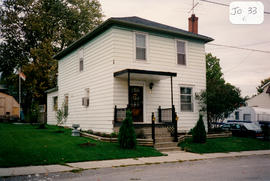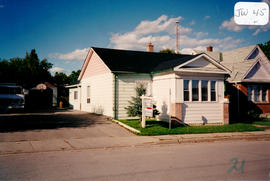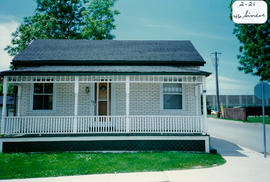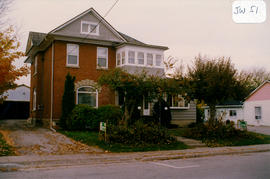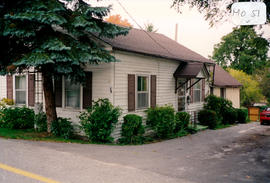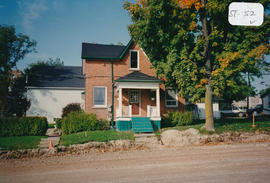- CA BWGPL GJ-HB-2017-04-07-03
- Item
- 1995
Part of George Jackson fonds
The mid-block building located at 25 Joseph St. was built pre-1900 in the Ontario Vernacular style. The 1½-storey, three-bay ‘farmhouse’ has a modified, ‘L’-shaped plan with an off-centre hall. It has low and medium-pitched, gable roofs. The enclosed porch was probably open originally. There are discontinuous eaves line. The entrance is raised slightly above grade level and the steps are not original. Originally, there was probably only a single entrance door via a porch. An entrance door with metal awning may be a later modification. The building’s 2/2 sash windows with plain, wood trim may be original, but the metal awnings at the windows and the door are not. Wood frame construction is covered with vinyl siding. The original cladding was probably wood cove siding. This structure has a parged, stone foundation. According to the 2000 inventory, the modest house has had cosmetic, and some minor, organizational modifications over time. (1, 3)
George Jackson



